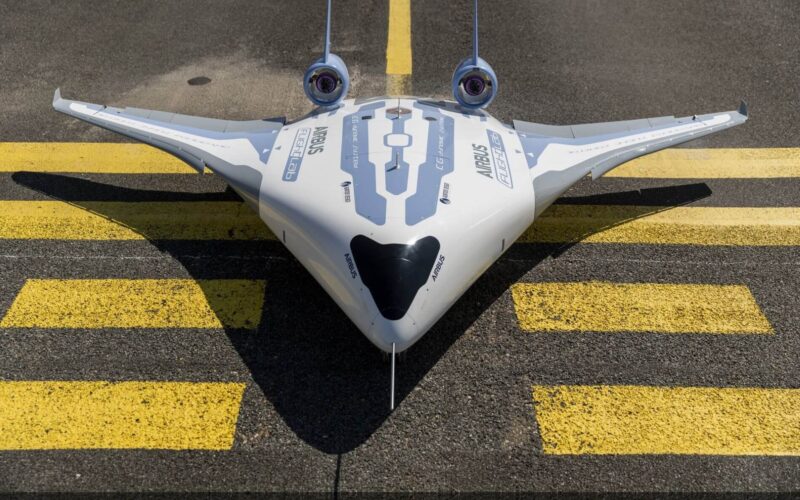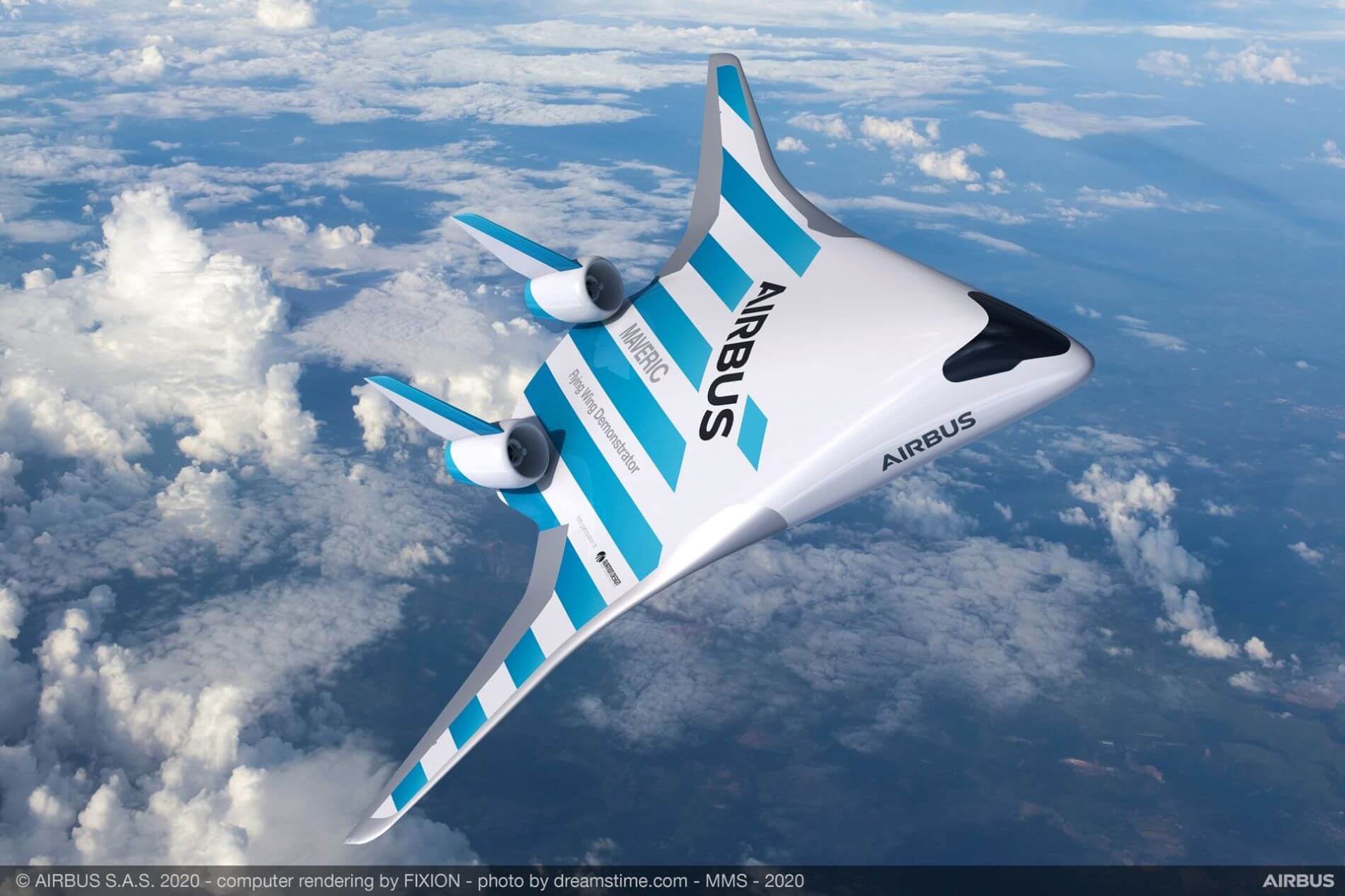In September 2020, Airbus presented their project ZEROe – three hydrogen-powered concept aircraft. A small conventional jet, a turboprop, and a blended-wing design, the trio quickly captured media’s attention, which, frankly, was their primary job.
Of all three designs, the spotlight was squarely taken by the blended-wing one. It stirred imaginations and produced headlines promising that this is what the airliner of the future looks like. Certainly, it was not the efficient engines or the new kind of fuel that resulted in such attention. It was an unusual form of the airplane.
It stood out from others because of its flying wing shape. And it marked nine decades of flying wings being the airliners of the very next generation, the one which is just around the corner.
What is a flying wing?
Those familiar with the matter will no doubt raise their eyebrows at the misuse of the term “flying wing”. The ZEROe concept actually does not belong to this category. It is simply a tailless blended-wing-body (BWB) design.
In the case of true flying wings, the aircraft does not have a fuselage at all, or alternatively – the entire fuselage is in the form of a wing. It may have slight protrusions for a cabin, engines, or stabilizers, but the idea is to have no definite “sections” of the aircraft’s body.
In a BWB design, the fuselage exists, but its transition into wings is smooth, without a dividing line. In some cases, the fuselage itself acts as a wing too, providing some lift.
In theory, the flying wing and the BWB design are two different beasts.
In practice, they are constantly misidentified, thrown together, and largely constitute the same thing not only for the uneducated public but for aviation enthusiasts and professionals too. Part of it is the notoriety of the term “flying wing”, as the shape of short, vaguely triangular aircraft is automatically associated with it.
Part of the confusion comes from the practical standpoint, as both designs are an answer to the same problem: how to make an aircraft more efficient.
In any case, it is easy to miss a slight change in angle and thickness at the point where a fuselage ends and a wing begins. Lo and behold, the term “flying wing” gets attached to any tailless BWB design.
Slightly before the ZEROe, Airbus unveiled another futuristic project – the MAVERIC, an “airliner of the future” supposed to yet again revolutionize air travel. It was a clear BWB design. The main promotional image, used by the company, had “Flying wing demonstrator” written on it. If Airbus calls their tailless BWB designs flying wings, maybe there is no sin in being a bit imprecise.
(Image: Airbus)
The Renaissance of flying wings
MAVERIC and ZEROe stand on heaps of previous research, both by Airbus and its competitors.
Notably, in between them was the maiden flight of the Flying-V – KLM’s sub-scale technology demonstrator, a proper flying wing. In the future, it is supposed to compete with Airbus A350, having a similar range and passenger capacity, but much better fuel economy, mostly thanks to the hyper-efficient design.
A few years earlier, in 2017, COMAC tested the “Ling bird B” BWB demonstrator, produced by their enigmatic Dream Studio.
Before them, there was the X-48: NASA’s not-really-flying-wing BWB design, of which a couple of prototypes were tested between 2005 and 2013. It was initiated as a project by Boeing Phantom Works, with an intention to produce a military cargo aircraft at first and maybe use gained knowledge for an airliner design later.
NASA itself has conducted wind tunnel tests with tailless BWB designs at least since 2003. Even before that, Airbus was heading The VELA Project – a design study for (again) misnamed “flying wing” – Very Efficient Large Aircraft, conducted between 2002 and 2005, supported by the European Commission and joined by almost two dozens of research institutions and companies.
Quite bizarrely, two aerospace giants even had one joint project. In 2001 Russian Central Aerohydrodynamic Institute (TsAGI) was joined by both Airbus and Boeing for a study on the feasibility of large capacity flying wing aircraft, resulting in research papers.
By that time, Boeing had already purchased McDonnell Douglas, which was conducting intensive research of the potential of flying wing design for commercial air travel at least since 1990. By 1997 – right before the purchase – it was about to start constructing a large-scale model of BWB-1-1 – an airliner with a passenger capacity of 400 and an entry into service in the near future of 2005. It had three engines and was almost identical to what later became XB-48.
Further east, the Tupolev design bureau started working on the Tu-404 in 1991; of its two possible designs, the “flying wing” (again, a tailless BWB design) was considered as the most promising. Engineers at TsAGI were developing their own project – “Flying Wing-900”, which resulted in several designs and ended in the mid-90s.
Together, all of these attempts constitute what could be called the Renaissance of a flying wing. Several prototypes, a dozen of projects, and countless research papers on everything from aerodynamics to logistics of commercial tailless BWB aircraft were a result of a simple idea that flying wing-like airplanes are feasible for commercial operations. Why was that?
The Dark Age of flying wings
According to Russian scientists from TsAGI, the talks of applying flying wing configuration to passenger or transport airplanes first appeared in 1989.
McDonnell Douglas started their research at approximately the same time too. Between 1987 and 1989 NASA was conducting several preliminary studies into flying wings, including an ambitious (and secret) Mach-2 capable oblique flying wing transporter.
On one hand, it seems quite clear that the Renaissance took root in the late 80s. Which, undoubtedly, puts Northrop Grumman B-2 Spirit as at least one of its culprits.
Revealed in 1988 the B-2 quickly inserted itself into the mass consciousness as an image of the future, together with several F-117-inspired concepts of the supposed next-generation stealth fighter, which also featured tailless BWB design.
The B-2 is mentioned in almost every subsequent research paper on the matter. For civilian engineers, the success of flying wings in the military sphere meant that the design has potential. It works, and all we need is to import that concept into the civilian market. That was enough to drag the flying wing from the shadows where it had lurked through the whole Cold War.
Those shadows were cast mostly by the supersonic airliners. Their dawn seemed just around the corner for the most part of the second half of the 20th century and flying wings did not lend themselves for supersonic cruise very well. BWB designs – even tailless ones – were there, but mostly in the military sphere.
The attempts included the Spanloader project, managed by NASA in the 70s. It resulted in Boeing, Lockheed, and McDonnell Douglas presenting concepts for super-large transport aircraft with cargo bays inside their wings.
There was also the long-running and ultimately unsuccessful attempt by Aereon, which was developing its Dynairship ꟷ a family of flying wing-shaped airships ꟷ between the 60s and the 90s.
But otherwise, the civilian side of things was too preoccupied with supersonic airliners. Through the 50s flying wings still sometimes appeared on the covers of popular science magazines, but those instances were few, and they constituted just an echo of what came before them: the Golden Age of the flying wing.
This article was originally published on AeroTime News on January 7, 2021.


